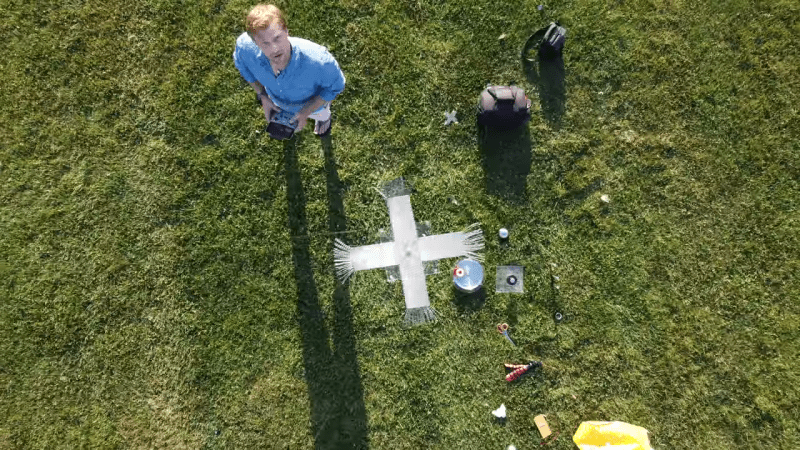Finally, someone decided to answer the question that nobody was asking: what if [Benjamin Franklin] had had a drone rather than a kite?
Granted, [Jay Bowles] didn’t fly his electricity-harvesting drone during a thunderstorm, but he did manage to reach some of the same conclusions that [Dr. Franklin] did about the nature of atmospheric electricity. His experimental setup was pretty simple: a DJI Mini2 drone with enough payload capacity to haul a length of fine-gauge magnet wire up to around 100 meters above ground level. A collecting electrode made of metal mesh was connected to the wire and suspended below the drone. Some big nails were driven into the soil to complete the circuit between the drone and the ground.
[Jay] went old-school for a detector, using a homemade electroscope to show what kind of static charge was accumulating on the electrode. Version 1 didn’t have enough oomph to do much but deliver a small static shock, but a larger electrode was able to deflect the leaves of an electroscope, power a beer can version of a Franklin bell, and also run a homemade corona motor. [ElectroBOOM] makes a guest appearance in the video below to explain the physics of the setup; curiously, he actually managed to get away without any injuries this time.
















Ok so is he harvesting static or is it inductive?
It’s not inductive: https://en.wikipedia.org/wiki/Atmospheric_electricity
You can get the same reults with the plasma channel formed by a powerful enough laser, anything that will get a conductor from the ground to a high enough level will work. I suspect that a fountain of salty water would also work.
The laser method wouldn’t work. While you could in theory initiate a nice long line of ionised molecules, it would take about 3 kV/m just to drive a current through it at atmospheric pressure. The 100 V/m gradient is 30 times too low.
This is not the same as the roughly 3 MV/m required to break down air. It’s the threahold at which it self extinguishes. Also it’s known to be good for about 1 A through 250 KA – where it decreases a bit at the higher end – but arcs are so unstable, and twist so much, that measuring it is a challenge.
If the voltage gradient were above the self extinguishing limit, then any arc that started would never stop (till the atmosphere ran out of charge enough to drop the voltage). On that latter front, the whole atmosphere is resistively coupled as the upper parts are weekly conductive.
Amusing physics demo, but not a vible power source. And the description of how it worked was terrible. One of the Feynman Lectures does it really well.